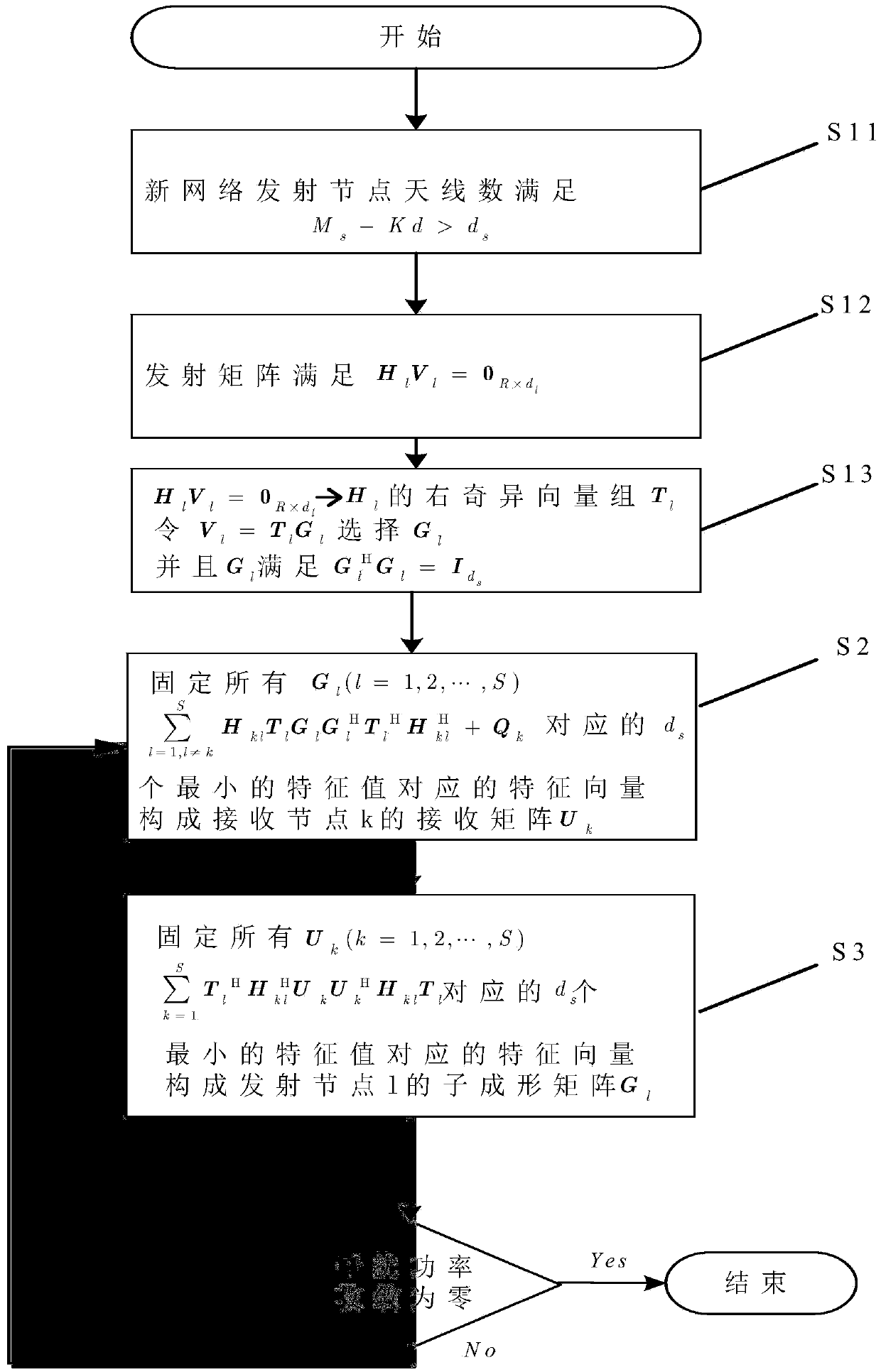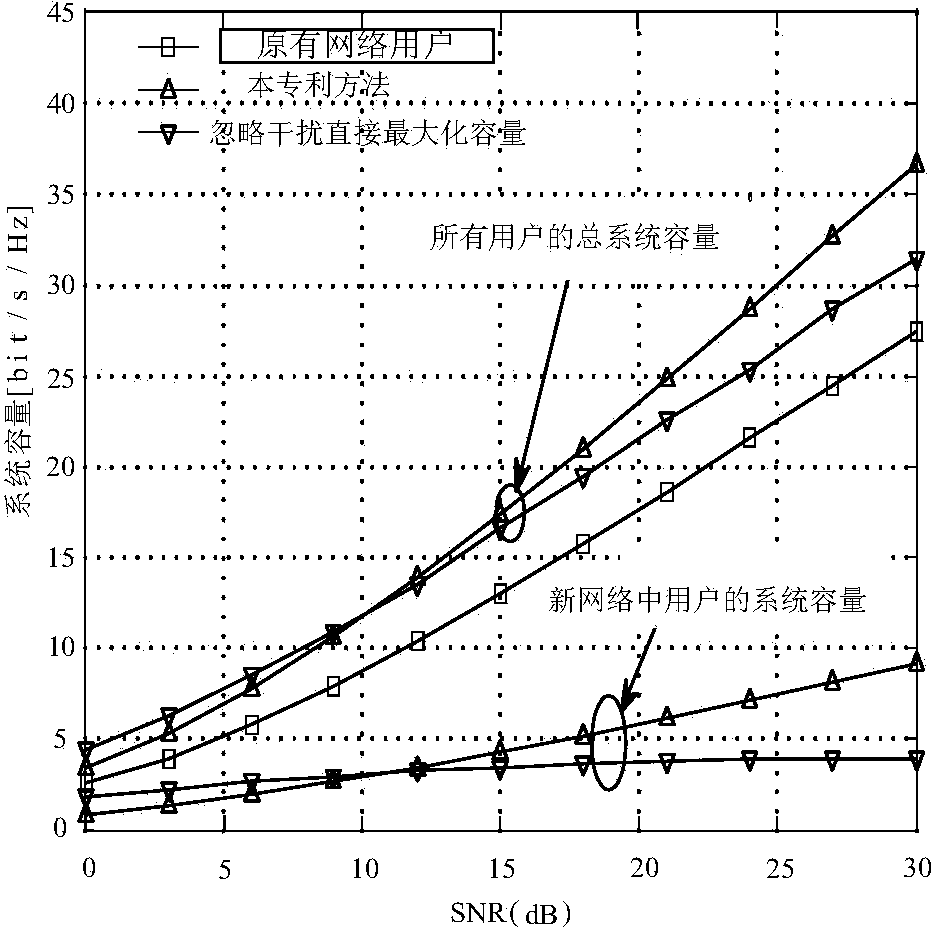Iteration interference alignment method
An interference alignment and iterative technology, applied in space transmit diversity, diversity/multi-antenna systems, preventing/detecting errors through diversity reception, etc., can solve problems such as increased user interference
- Summary
- Abstract
- Description
- Claims
- Application Information
AI Technical Summary
Problems solved by technology
Method used
Image
Examples
specific Embodiment approach
[0026] Such as figure 2 As shown, in an interference network of K users, K transmitting nodes independently and simultaneously transmit to K receiving nodes, and an interference network of S users and an interference network of K users share the same frequency spectrum. figure 2 The middle marks from user 1 to user K represent the users in the original network, figure 2 The subscripts from user K+1 to user K+S represent newly added users in the network. The transmitting node and the receiving node are respectively configured with M j and N i Antennas. The transmitting node has d i The data must be sent to the receiving node at the same time, and the data between different users is not shared. The channel matrix between the transmitting node and the receiving node is H ij . The receiving node can receive both the desired signal and the interference signal from other transmitting points.
[0027] All User DataX j , where j=1,2,...,K+S sends the matrix V through the c...
PUM
 Login to View More
Login to View More Abstract
Description
Claims
Application Information
 Login to View More
Login to View More - R&D
- Intellectual Property
- Life Sciences
- Materials
- Tech Scout
- Unparalleled Data Quality
- Higher Quality Content
- 60% Fewer Hallucinations
Browse by: Latest US Patents, China's latest patents, Technical Efficacy Thesaurus, Application Domain, Technology Topic, Popular Technical Reports.
© 2025 PatSnap. All rights reserved.Legal|Privacy policy|Modern Slavery Act Transparency Statement|Sitemap|About US| Contact US: help@patsnap.com



